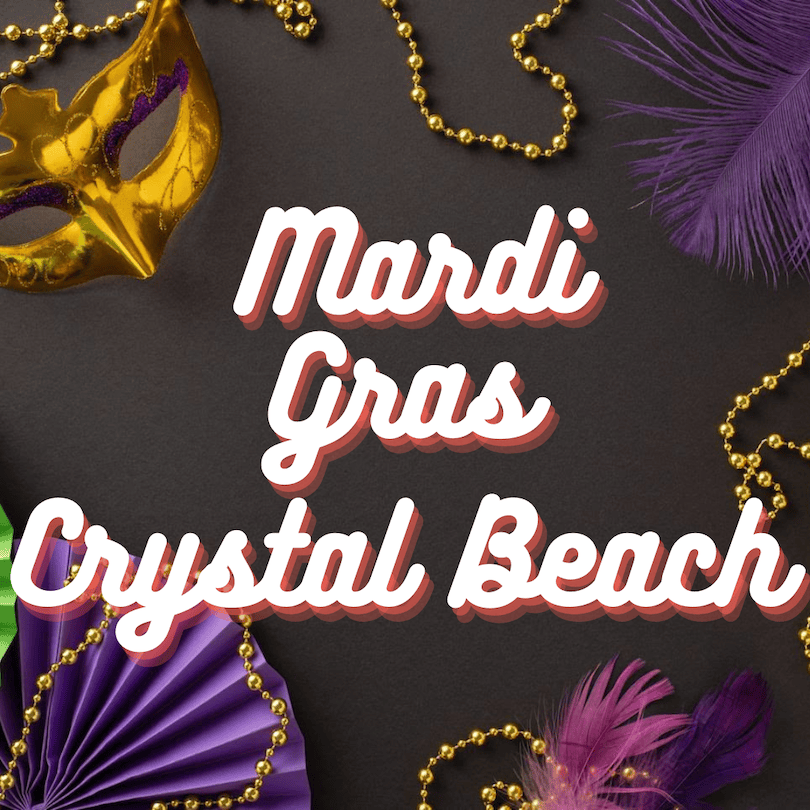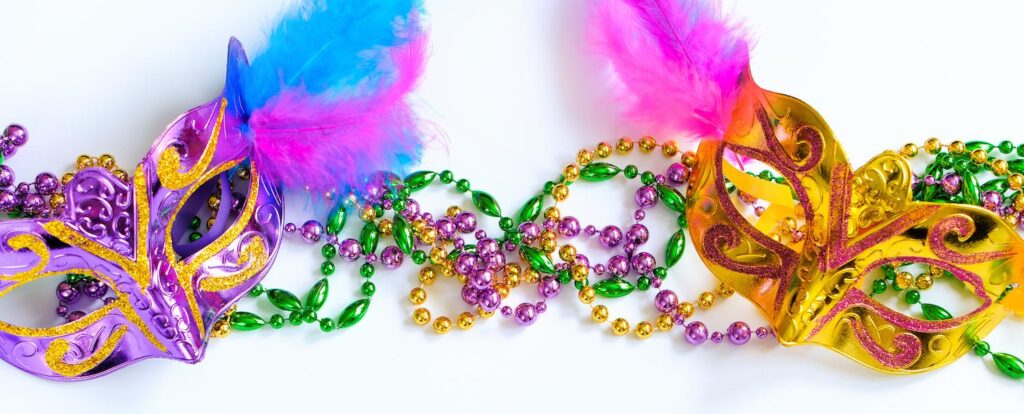
Mardi Gras on Crystal Beach, Texas
Mardi Gras Beyond New Orleans
While New Orleans is the epicenter of Mardi Gras in the United States, other cities and regions also celebrate the festival in their own distinctive ways:
Galveston, Texas:
Galveston hosts one of the largest Mardi Gras celebrations in Texas, featuring parades, live music, and masked balls.
Crystal Beach, Texas:
Crystal Beach offers a more laid-back and community-driven Mardi Gras experience. Its parades often showcase a mix of colorful floats and local charm, with residents and visitors gathering to enjoy the festive atmosphere and Gulf Coast scenery.
Celebrating Mardi Gras in Crystal Beach Texas
Why Renting a Short-Term Vacation Home Is Perfect for Mardi Gras in Crystal Beach, Texas
When it comes to celebrating Mardi Gras, nothing beats a coastal escape to Crystal Beach, Texas. One of the most important decisions you’ll face is choosing where to stay. While hotels may seem like an obvious option, short-term vacation rentals offer a superior experience, especially during Mardi Gras celebrations. Renting a vacation home through Bolivar Escapes is the ideal choice for your Crystal Beach Mardi Gras retreat.
At Bolivar Escapes you will experience professional one on one local customer service to answer any questions you may have. We are right there on the peninsula with you to take care of your needs with 24/7 customer service.
Reserve the perfect home away from home from Bolivar Escapes. Click Here to view our available Home Rentals.
The History of Mardi Gras
Mardi Gras, a term that translates to “Fat Tuesday” in French, is a festive celebration known for its colorful parades, elaborate masks, and joyous revelry. Its roots, however, extend far beyond the beads and costumes associated with modern celebrations. From its ancient origins to its evolution into a globally recognized festival, the history of Mardi Gras is as rich and diverse as the traditions it encompasses.
Ancient Origins of Mardi Gras
The origins of Mardi Gras can be traced back to ancient pagan festivals, such as Saturnalia and Lupercalia, celebrated in Rome. These festivals were marked by feasting, dancing, and other revelries that honored the gods and the arrival of spring. When Christianity spread throughout the Roman Empire, many of these traditions were adapted to align with the new faith.
By the Middle Ages, the Catholic Church established Lent, a 40-day period of fasting and penance leading up to Easter. Mardi Gras emerged as the last opportunity for indulgence before the solemnity of Lent. The name “Fat Tuesday” reflects the tradition of consuming rich, fatty foods before the Lenten period of abstinence.
Mardi Gras in Europe
Mardi Gras gained prominence in Europe during the Renaissance, particularly in France, Italy, and Spain. The festival was characterized by masquerade balls, feasts, and street performances. The use of masks became a central element, allowing participants to shed social distinctions and indulge in the festivities anonymously.
Venice, Italy, became renowned for its elaborate Carnivals, where ornate masks and costumes turned the city into a theatrical spectacle. France’s Mardi Gras celebrations also flourished, particularly in cities like Paris, where grandeur and opulence defined the festivities.
The Arrival of Mardi Gras in the Americas
Mardi Gras was introduced to the Americas by French explorers in the early 18th century. In 1699, French-Canadian explorer Pierre Le Moyne d’Iberville arrived near present-day New Orleans. Knowing it was Fat Tuesday, he named the location “Pointe du Mardi Gras.”
The French settlers in Louisiana embraced Mardi Gras, incorporating their European traditions into the local culture. By the mid-18th century, masked balls and street parties were a common feature of New Orleans’ Mardi Gras celebrations.
Modern Day Mardi Gras
Today, Mardi Gras is a fusion of historical traditions and modern influences. In New Orleans, the celebration has expanded to include music festivals, culinary events, and art installations. The festival is not only a cultural phenomenon but also a significant economic driver, attracting millions of visitors annually.
Despite its commercialization, Mardi Gras remains deeply rooted in community and tradition. Local families often host their own celebrations, and many neighborhoods have their own unique parades and customs.





